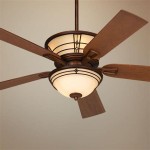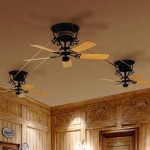How to Choose a Ceiling Design
Ceiling design, often an overlooked aspect of interior design, significantly impacts the overall aesthetic and ambiance of a space. A well-chosen ceiling can enhance architectural features, improve acoustics, and even influence the perception of room size. Conversely, a poorly selected design can detract from the room’s overall appeal and create a feeling of unease. Therefore, careful consideration should be given to various factors when selecting a ceiling design that harmonizes with the existing decor and fulfills desired functionalities.
The process of selecting a suitable ceiling design involves evaluating the room's dimensions, architectural style, lighting requirements, and intended use. Understanding these elements enables a more informed decision-making process, leading to a ceiling design that complements the space and enhances its character. This article outlines key considerations for choosing a ceiling design, providing a comprehensive guide for homeowners, designers, and builders alike.
Understanding Room Dimensions and Proportions
Room size and ceiling height are pivotal factors in determining the appropriate ceiling design. A low ceiling in a small room can feel even more confined with a design that visually lowers the space. Conversely, a high ceiling in a large room can feel vast and impersonal if not addressed with a design that adds warmth and intimacy. The dimensions dictate the type of elements that can be effectively incorporated into the ceiling without compromising the overall balance of the room.
For rooms with low ceilings, designs that create the illusion of height are preferable. Examples include light-colored ceilings, vertical patterns, and recessed lighting. Avoid dropped ceilings or heavy ornamentation, as these can further compress the space. Instead, opt for a smooth, unadorned surface that reflects light and visually expands the room. Utilizing a glossy paint finish can also contribute to this effect, maximizing light reflection and minimizing shadows.
Conversely, rooms with high ceilings can benefit from designs that add visual interest and bring the ceiling plane closer to the human scale. Coffered ceilings, exposed beams, or decorative moldings can effectively achieve this. Darker colors or textured surfaces can also help to reduce the perceived height and create a more intimate atmosphere. In large spaces, consider incorporating multiple design elements to break up the expanse of the ceiling and add visual complexity.
The shape of the room also plays a crucial role. Irregularly shaped rooms may require custom ceiling designs to address specific architectural challenges. Sloped ceilings, for instance, may necessitate the use of specialized techniques to ensure a cohesive and aesthetically pleasing result. In such cases, consulting with an experienced professional is highly recommended to develop a tailored solution that optimizes the available space and aligns with the room's overall design.
Considering Architectural Style and Theme
The architectural style of the building and the overall design theme of the room should heavily influence the choice of ceiling design. A modern minimalist space calls for a different approach than a traditional Victorian home. Selecting a ceiling design that clashes with the existing architectural style can create a jarring and disharmonious effect, detracting from the room's overall aesthetic.
In contemporary spaces, clean lines, simple shapes, and minimal ornamentation are typically favored. Smooth, flat ceilings with recessed lighting are common choices. Materials such as drywall, metal, or glass are often used to create a sleek and modern look. Avoid elaborate moldings or intricate patterns, as these can feel out of place in a contemporary setting. The focus should be on creating a seamless and uncluttered surface that complements the room's minimalist aesthetic.
Traditional architectural styles, such as Victorian, Georgian, or Tudor, often feature more elaborate ceiling designs. Coffered ceilings, crown moldings, and decorative plasterwork are common elements. Rich colors, ornate patterns, and intricate details are often incorporated to enhance the room's grandeur and historical character. Materials such as wood, plaster, and decorative metal are typically used to create a sense of warmth and opulence.
For transitional spaces, which blend elements of both traditional and modern design, a more flexible approach is required. A balance must be struck between simplicity and ornamentation to create a cohesive and harmonious result. Consider incorporating subtle moldings, textured surfaces, or accent lighting to add visual interest without overwhelming the space. The goal is to create a ceiling design that complements the room's overall aesthetic while maintaining a sense of timeless elegance.
Evaluating Lighting Requirements and Integration
The integration of lighting is an essential aspect of ceiling design. The type of lighting fixtures, their placement, and their interaction with the ceiling surface significantly impact the room's illumination and overall ambiance. Careful consideration should be given to the lighting requirements of the space and how the ceiling design can best accommodate and enhance those needs.
Recessed lighting is a popular choice for modern spaces due to its clean and unobtrusive appearance. These fixtures are flush with the ceiling surface, providing a seamless and uniform distribution of light. Recessed lighting is particularly well-suited for low ceilings as it does not visually lower the space. Different types of recessed lighting, such as adjustable spotlights or ambient downlights, can be used to create a variety of lighting effects.
Pendant lights and chandeliers can add a decorative element to the ceiling while providing ambient or task lighting. These fixtures are typically suspended from the ceiling and can serve as a focal point in the room. The size and style of the pendant light or chandelier should be carefully selected to complement the room's overall design. Consider the ceiling height and room size when determining the appropriate scale of the fixture.
Track lighting offers a flexible and adaptable lighting solution. These fixtures consist of a track mounted to the ceiling with multiple adjustable light heads. Track lighting allows for precise control over the direction and intensity of light, making it ideal for highlighting artwork, architectural features, or specific areas within the room. Track lighting can be particularly useful in rooms with irregular shapes or complex layouts.
Indirect lighting, such as cove lighting or uplighting, can create a soft and diffused illumination that enhances the room's ambiance. These techniques involve concealing the light source and reflecting the light off the ceiling or walls. Indirect lighting can create a sense of depth and spaciousness, making it particularly well-suited for rooms with low ceilings. Consider using LED strip lights or fluorescent tubes to create a subtle and energy-efficient indirect lighting system.
Considering Materials and Finishes
The selection of materials and finishes for the ceiling design is crucial for achieving the desired aesthetic and functional properties. Different materials offer varying levels of durability, sound absorption, light reflection, and aesthetic appeal. The choice of material should be based on the specific requirements of the space and the overall design concept.
Drywall is a common and versatile material for ceiling construction. It is relatively inexpensive, easy to install, and can be finished with a variety of paints, textures, and coverings. Drywall is a good choice for creating smooth, seamless ceilings. However, it is not particularly durable or sound-absorbent. For areas that require enhanced sound control, consider using acoustic drywall or adding soundproofing insulation.
Wood ceilings can add warmth, texture, and character to a room. Wood can be used in various forms, such as planks, panels, or beams. Wood ceilings can create a rustic, traditional, or modern aesthetic, depending on the type of wood, finish, and installation method. Wood is a relatively durable material, but it can be susceptible to moisture damage. It is important to properly seal and protect wood ceilings in areas with high humidity.
Metal ceilings offer a sleek, modern, and durable option. Metal can be used in various forms, such as panels, tiles, or suspended ceilings. Metal ceilings are often used in commercial spaces due to their durability and ease of maintenance. However, they can also be used in residential settings to create a contemporary aesthetic. Metal ceilings are available in a variety of colors, finishes, and patterns.
Acoustic ceilings are designed to absorb sound and reduce reverberation. These ceilings are often used in offices, classrooms, and other spaces where noise control is important. Acoustic ceilings are typically made from materials such as mineral fiber, fiberglass, or foam. They are available in a variety of shapes, sizes, and colors.
The finish applied to the ceiling surface can significantly impact its appearance and performance. Matte finishes are non-reflective and can help to conceal imperfections. Glossy finishes reflect light and can make a room feel larger. Textured finishes add visual interest and can help to hide blemishes. The choice of finish should be based on the desired aesthetic and the functional requirements of the space.

Choose The Right False Ceiling Material For Your Space

15 Tips To Choose False Ceiling Lights Simple Home Decor Ideas

How To Choose False Ceiling Lights You Might Need This Guide

Transform Your Bedroom With The Latest Ceiling Design Ideas Tips To Choose

False Ceiling Colour Combinations For Your Home Designcafe

10 Latest False Ceiling Design Ideas For Your Stunning Home By Livspace

10 Trending Pop Design Ideas For Living Room Nerolac

Explore 34 Trending False Ceiling Designs For Your Beautiful Bedroom

Modern False Ceiling Design For Main Hall With Images Nerolac

A Comprehensive Guide To Choose The Right False Ceiling Design
Related Posts








